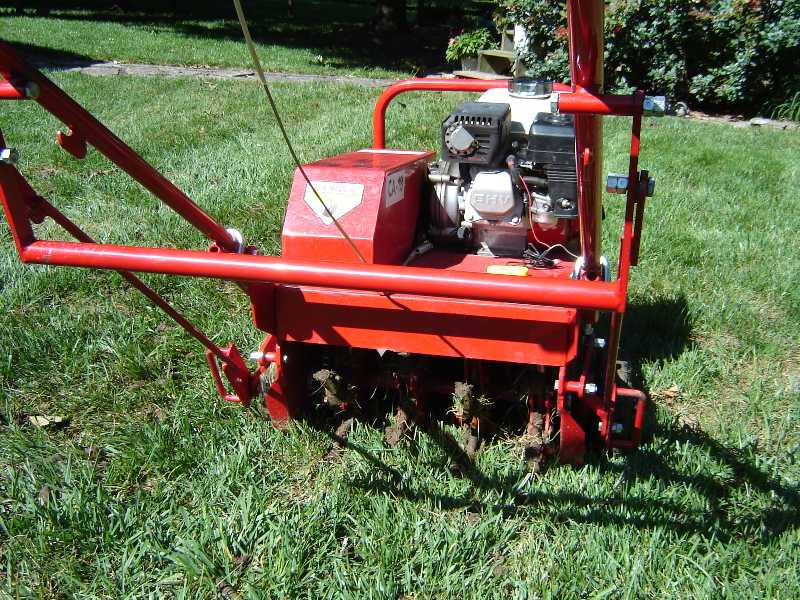Index was out of range. Must be non-negative and less than the size of the collection.
Parameter name: index
What is core aerification and when should I do it?
Core aerification is the process by which a small core or plug of soil is mechanically removed from a lawn by a machine called a core aerator. Core aerating machines are either self propelled, power driven machines or units that can be pulled behind a lawn tractor.

Aerators remove from ½ to ¾ inch diameter cores and deposit them onto your lawn. Aeration holes are typically from 2 to 4 inches deep and 2 inches apart. Penetration depth will depend on the machine used and the condition of the soil at the time of aeration.
The soil cores extracted by the machine are left on the soil surface and usually “melt” back into the lawn in a 2 to 4 week period.
Other “aerating” machines push a solid spike or tine into the soil without removing a plug of soil. The benefits from these type machines are generally short lived and the pushing of the soil to the sides of each hole can contribute to compaction.
The benefits of core aerification include:
- Reducing soil compaction
- Helping control lawn thatch See “What is lawn thatch and how do I check for it?”
- Aiding in the infiltration of air, water, and nutrients into the soil
- Encouraging deeper rooting of grass plants
- Helping prevent fertilizer and pesticide runoff
- Providing an ideal site for the introduction of improved varieties of grass in cool-season lawns
- Providing a moist, shaded location that is ideal for grass seed germination in cool-season lawns
The core aerating machine can also be used to prepare the soil for seeding when renovating your cool-season lawn. When using the machine for this purpose, several passes in different directions are needed in order to provide good seed to soil contact.
So when should I aerate and how often should I do it?
Lawns should be aerated at the beginning of their most active period of growth when new root development and growth is encouraged.
Cool-season lawns such as fescue, Kentucky bluegrass, and ryegrasses are best aerated from late August through September.
In the St. Louis area, warm- season lawns such as zoysia grass are best aerated from late May through June.
Cool-season lawns may be seeded after aeration. Both cool-season and warm-season lawns may be fertilized immediately after aeration.
Frequency of aeration will depend on the amount of use and compaction that your lawn receives on a yearly basis. Lawns on heavy clay soils and with thatch layers thicker than ½ inch are best aerated on an annual basis. Topdressing these type lawns after aeration with ¼ inch of compost will increase the organic content of the soil and aid in the reduction of thatch.
Although it is not necessary to aerate other lawns this frequently, they too will benefit from an annual aeration.